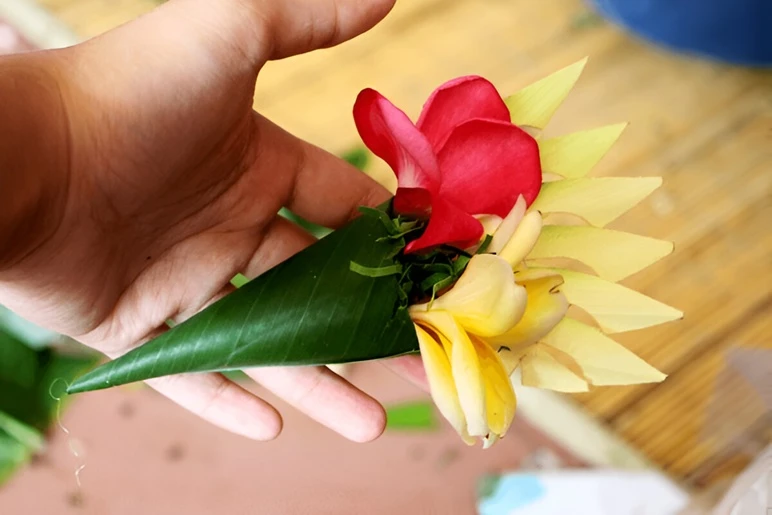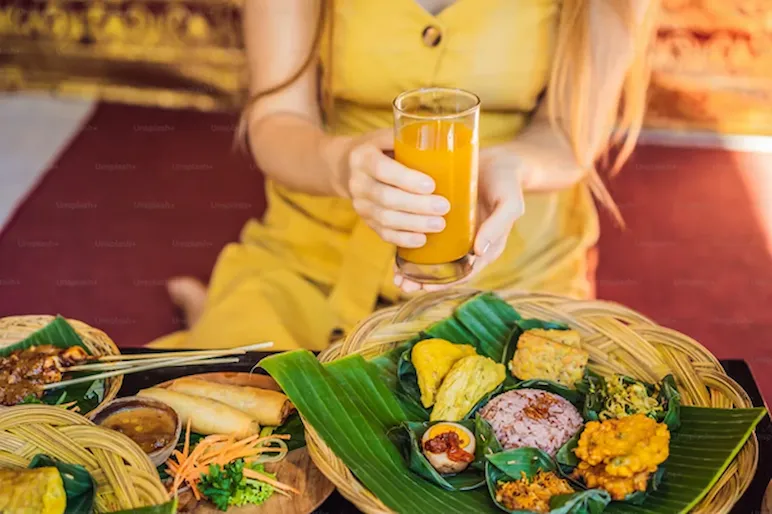In the sacred world of Balinese Hinduism, offerings are not simply ritual objects—they are intricate expressions of love, reverence, and divine connection. Among the many forms of banten (offerings), one of the most meaningful and symbolically rich is the kwangen. This small, fragrant offering is a core component of numerous ceremonies and prayers, representing a delicate balance between the material and spiritual worlds.
Among the many forms of Balinese banten (offerings), one of the most meaningful and symbolically rich is the kwangen
A Name Rooted in (Aromatic) Devotion
The word kwangen comes from the Old Javanese term "wangi", meaning fragrant or aromatic. As its name suggests, kwangen is used to present something pleasing and sacred to Ida Sang Hyang Widhi Wasa, the Almighty God, and His manifestations. It is commonly used in temple ceremonies, household rituals, and particularly during the third and fourth phases of prayer (sembah), when devotees offer their worship to the Ista Dewata and then petition for divine grace. In these moments, the kwangen is held gently between the fingers, much like one would hold flower petals, allowing its fragrance and form to enhance the spiritual atmosphere.
What makes the kwangen so fascinating is the layered symbolism within its construction. It is a conical arrangement crafted primarily from banana leaves, forming a vessel known as a kojong. This cone shape is not arbitrary; it symbolizes the Ardha Candra, or half-moon, representing receptiveness and the feminine aspect of the universe. Inside this humble green vessel lies a collection of symbolic elements, each contributing to the overall spiritual message of the offering.
Symbolic Elements and Their Meanings
A small holed coin known as pis bolong is placed inside to represent Windhu, or cosmic unity. These coins—often Chinese in origin and adorned with Mandarin or Sanskrit characters—carry spiritual weight, believed to balance any imperfections in the offering. Next comes a single leaf known as plawa, often from aromatic plants like pandan or kemuning. This element symbolizes clarity of thought and inner calm, essential states for genuine prayer.
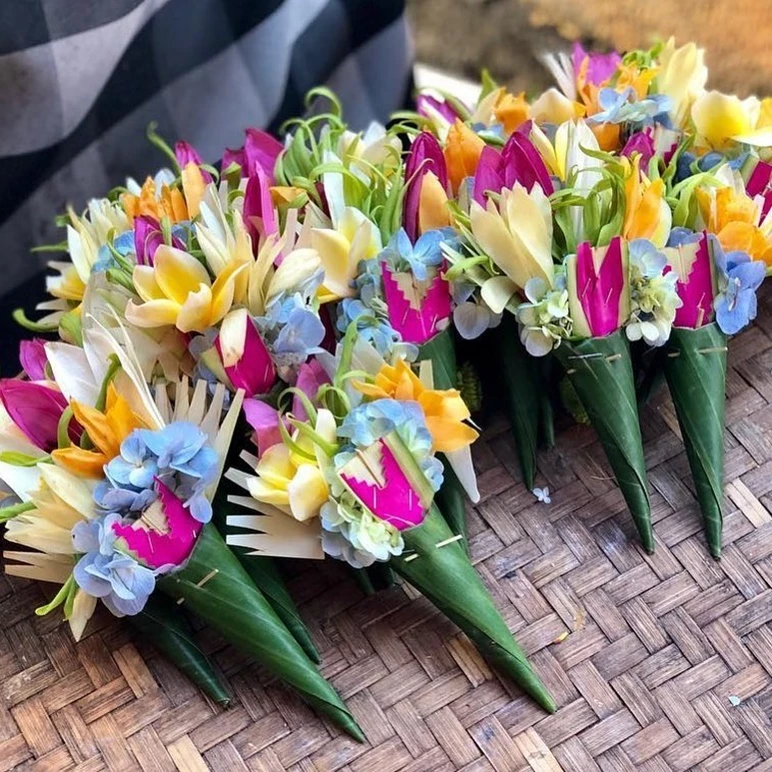
The porosan silih asih, made of two betel leaves bound together and filled with areca nut and lime, is another vital part of the kwangen. It embodies Purusha and Pradana—spirit and matter—and reflects the close relationship between humans and the divine. Then there is the sampian cili, a small fan-shaped ornament made from young coconut leaves, representing nada or spiritual sound. Around this fan, fragrant flowers such as water jasmine (pacah), frangipani, ylang-ylang (sandat), or paper flowers are arranged. These flowers are chosen not only for their scent but also for their symbolic meaning—love, purity, and devotion.
All of these elements are arranged with great care and mindfulness inside the kojong. The result is a miniature bouquet that is both visually stunning and deeply meaningful. The process of assembling a kwangen is as meditative as its use—each fold of the leaf, each placement of a flower, is a silent prayer in itself.
Om Kara: The Divine Resonance
Beyond its visual and aromatic appeal, the kwangen carries profound philosophical weight. It is often interpreted as a physical symbol of Om Kara, the sacred syllable that represents God in Balinese Hinduism. In this way, kwangen is not only a tool for prayer but a tangible embodiment of divinity. The act of holding a kwangen is symbolic of holding the essence of God, helping the devotee to focus, purify the heart, and elevate the soul.
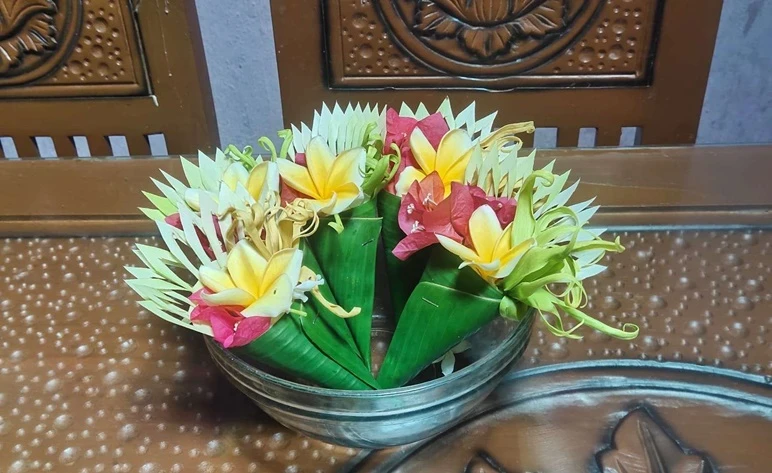
Kwangen exemplifies the intricate beauty and intentionality of Balinese rituals, serving not merely as an offering but as a sacred vessel of spiritual meaning. Used with purpose during significant ceremonies, its presence sanctifies the space, purifies energy, and infuses the moment with divine fragrance. As a harmonious blend of symbolism, scent, and artistry, kwangen reflects the Balinese view that the divine is not distant, but intimately woven into the sensory and material world—something to be seen, touched, and felt with devotion.



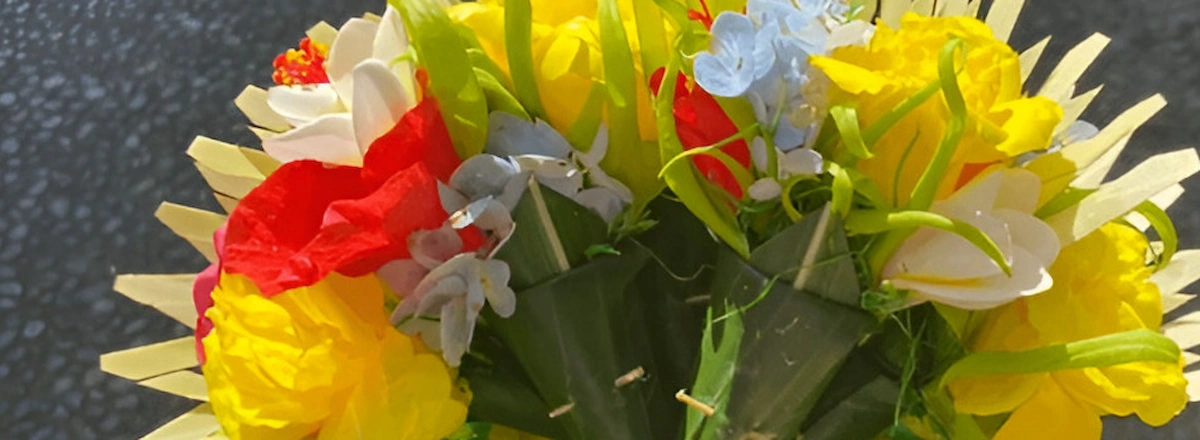
 Billy Bagus
Billy Bagus
 Jun 03, 2025
Jun 03, 2025
